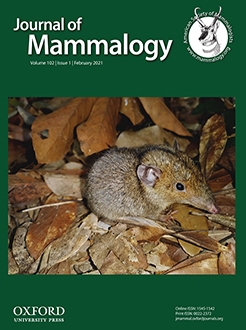Subterranean rodents spend most of their lives in underground burrow systems, and most studies to date on their morphological, behavioral, and physiological, adaptations have been based on their whole-life existence in subterranean ecotopes. However, a few studies have reported that some subterranean rodents exhibit aboveground activity under particular circumstances, and the results of these studies help zoologists to better understand the adaptations of subterranean rodents coping both with belowground and aboveground environments. These studies, however, do not include direct observations of the aboveground activity of these rodents. Moreover, studies into the factors that influence the movement of these subterranean rodents outside of their burrow systems are relatively scarce. Here, we report the aboveground activity pattern of plateau zokor (Myospalax fontanieri) based on videos and photographs captured by infrared cameras combined with radiotracking technology in the eastern Qilian Mountains, northwest China. In addition, the potential factors that influence the aboveground activity of plateau zokor, including temperature, humidity, food, dispersal, and mating, were studied in 2015 and 2016. We found that, of the 16 zokors with radiocollars, five females moved aboveground during the day and night in June and July 2015, with the frequency of their aboveground activity being higher during the day than that at night. Temperature, humidity, mating, and dispersal, had no effects on aboveground plateau zokor movement. However, results of a binary logistic regression indicated that the crude fat contents of aboveground and belowground plants were positively and negatively correlated with the aboveground activity of these zokors, respectively. We infer that plateau zokor move on the ground to forage for plants with higher fat content and that changes in available nutrients might serve as potential cues that affect the surface activity of plateau zokor.
How to translate text using browser tools
22 January 2021
Why does the plateau zokor (Myospalax fontanieri: Rodentia: Spalacidae) move on the ground in summer in the eastern Qilian Mountains?
Bin Chu,
Chengpeng Ji,
Jianwei Zhou,
Yanshan Zhou,
Limin Hua
ACCESS THE FULL ARTICLE

Journal of Mammalogy
Vol. 102 • No. 1
February 2021
Vol. 102 • No. 1
February 2021
aboveground activity
alpine meadow
foraging strategy
subterranean rodent




